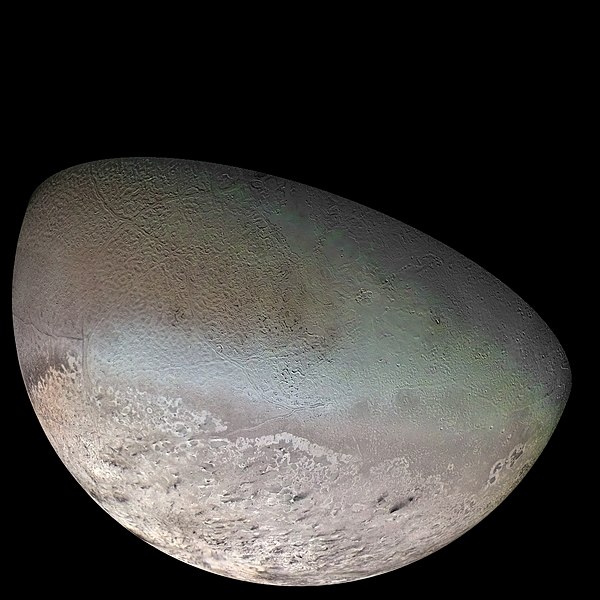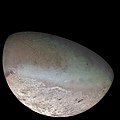Súbor:Triton moon mosaic Voyager 2 (large).jpg

Veľkosť tohto náhľadu: 600 × 600 pixelov. Iné rozlíšenia: 240 × 240 pixelov | 480 × 480 pixelov | 768 × 768 pixelov | 1 024 × 1 024 pixelov | 2 048 × 2 048 pixelov | 4 700 × 4 700 pixelov .
Pôvodný súbor (4 700 × 4 700 pixelov, veľkosť súboru: 12,11 MB, MIME typ: image/jpeg)
História súboru
Po kliknutí na dátum/čas uvidíte ako súbor vyzeral vtedy.
| Dátum/Čas | Náhľad | Rozmery | Používateľ | Komentár | |
|---|---|---|---|---|---|
| aktuálna | 19:40, 10. október 2011 |  | 4 700 × 4 700 (12,11 MB) | Jbarta | Minimally compressed JPG from TIFF original at NASA. This image has already been colored by NASA. I think we have no business trying to "fix" the coloring. The only alteration made from the NASA original is to enlarge the canvas to enclose the complete sp |
| 21:00, 1. január 2010 |  | 4 600 × 4 600 (2,81 MB) | Supportstorm | Image Adjustments: Auto levels on contrast and color | |
| 21:59, 18. február 2008 |  | 4 600 × 4 600 (1,71 MB) | Kaldari | same image, better dimensions | |
| 04:59, 8. apríl 2005 |  | 4 500 × 3 500 (1,96 MB) | Bricktop | same image, higher resolution | |
| 17:13, 3. apríl 2005 |  | 1 024 × 796 (150 KB) | Smartech~commonswiki | A color mosaic of Triton, Neptune's moon (large). Taken by Voyager 2 in 1989. Color was synthesized by combining high-resolution images taken through orange, violet, and ultraviolet filters; these images were displayed as red, green, and blue images and |
Použitie súboru
Na tento súbor odkazuje nasledujúcich 11 stránok:
- Mesiac (družica)
- Wikipédia:Odporúčané články (2017)
- Šablóna:Wikipédia/Odporúčaný článok/07 2017
- Portál:Astronómia/Náhodné články
- Portál:Astronómia/Obrázky týždňa (2006)
- Portál:Astronómia/Obrázok týždňa/47 2006
- Portál:Astronómia/Odporúčané články
- Portál:Astronómia/Odporúčané články 2015
- Portál:Astronómia/Odporúčaný článok/29
- Portál:Slnečná sústava/Odporúčané články
- Portál:Slnečná sústava/Odporúčaný článok/3
Globálne využitie súborov
Nasledovné ďalšie wiki používajú tento súbor:
- Použitie na af.wikipedia.org
- Použitie na an.wikipedia.org
- Použitie na ar.wikipedia.org
- Použitie na ary.wikipedia.org
- Použitie na arz.wikipedia.org
- Použitie na ast.wikipedia.org
- Použitie na azb.wikipedia.org
- Použitie na az.wikipedia.org
- Použitie na ba.wikipedia.org
- Použitie na be-tarask.wikipedia.org
- Použitie na be.wikipedia.org
- Použitie na bg.wikipedia.org
- Použitie na bn.wikipedia.org
- Použitie na bn.wikibooks.org
- Použitie na bs.wikipedia.org
- Použitie na ca.wikipedia.org
Zobraziť ďalšie globálne použitie tohto súboru.


